Commercial Mixer Accessories offer Versatility and Productivity
Jan 11th 2018
Commercial mixers are an important and highly versatile piece of equipment in any kitchen, and mixer accessories include the tools to expand that even more. Many mixer hooks come standard with the machine, some are purchased as options. With the range of accessories available, you can prepare everything from tough pizza dough to delicate meringues to even getting plates for shredding cheese, all on one machine.
Here are some common accessories and their uses.
Keep in mind that every mixer requires accessories to fit its specific bowl size. For example, a whip made for a 20 quart mixer will not be able to reach the sides of the bowl of a 30 quart mixer, and you won't get a proper mix.
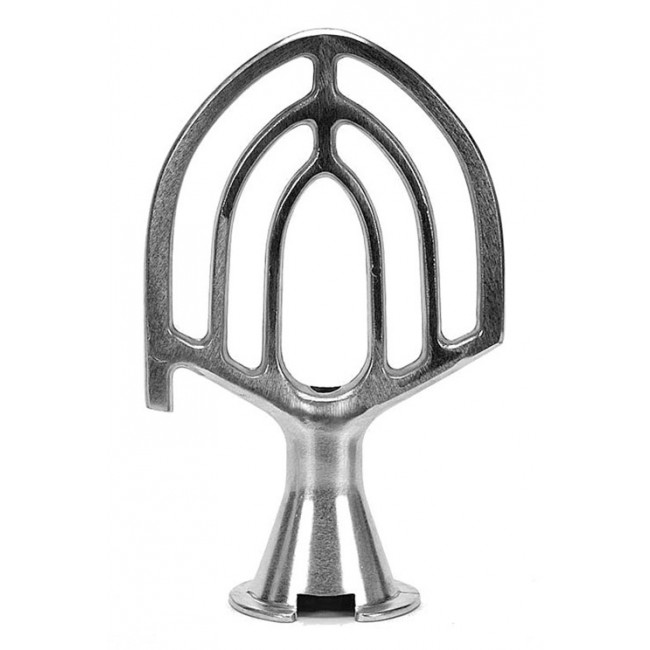
Flat Beater
The flat beater, also known as a paddle, is a multi-purpose tool used for light to medium mixtures such as cake batter, mashed potatoes, cookies, frostings and meatloaf. The edges of the beater will cut through soft or fat-based solids, such as potatoes or butter, to help incorporate or cream them into mixtures. The paddle will also distribute solid bits, such as chocolate chips or nuts, into the batter.
To use the flat beater, you’ll want to start on a low speed and work your way up, so the ingredients don’t splatter out of the bowl. You don’t need to use the highest speeds with a flat beater, since you’re not trying to whip these types of ingredients.
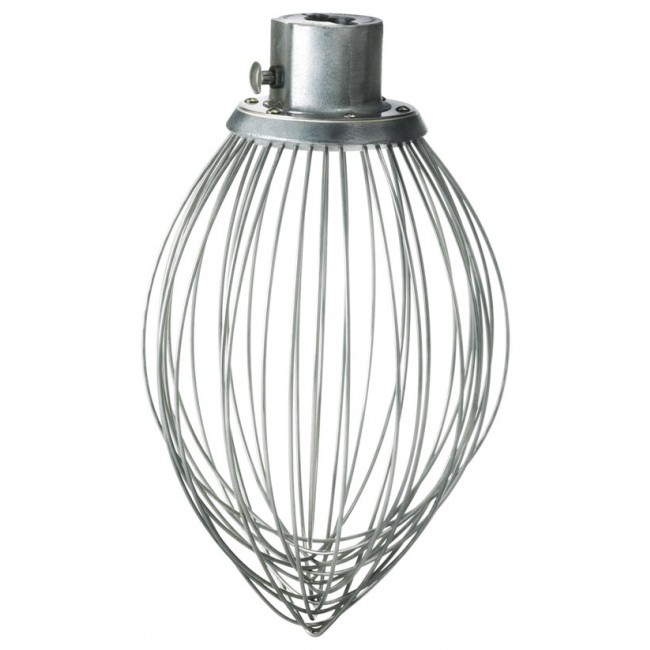
Wire whip
Wire whips, or whisks, will incorporate air into your mixture, and are great for whipping egg whites, cream or light icings. This accessory is referred to as cage whip or a balloon whip. While commercial wire whips are made to last, you should still treat them with care so as not to break the wires. For example, you wouldn’t want to bang them against the edge of the bowl to get the remaining batter off.
Heavy duty whips are also available for heavier mixtures you want to aerate, and can take more of a beating in the kitchen.
Whips should start at a low speed and work their way up to the higher speeds to allow the mixture to be aerated. Keep an eye on your bowl, though, as over whipping may change the consistency of your ingredients. Mixers with timers on them can help prevent overmixing too, like the Globe SP20.
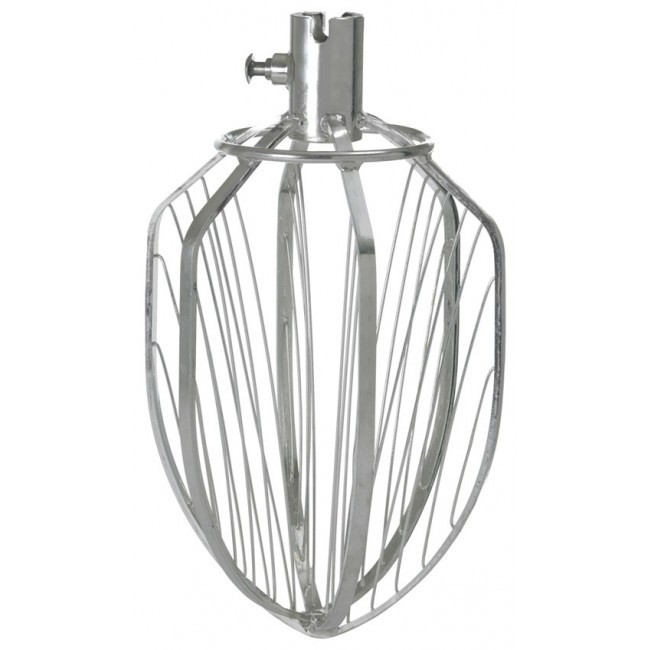
Wing whip
A wing whip is similar to a wire whip in that it will aerate your ingredients and make them creamy, but the wing whip has a more solid construction to the frames on its 'wings.' It can, therefore, handle heavier products.
A wing whip may be used for mashed potatoes, butter, icing or mayonnaise. The manufacturer recommends using low speeds with wing whips.
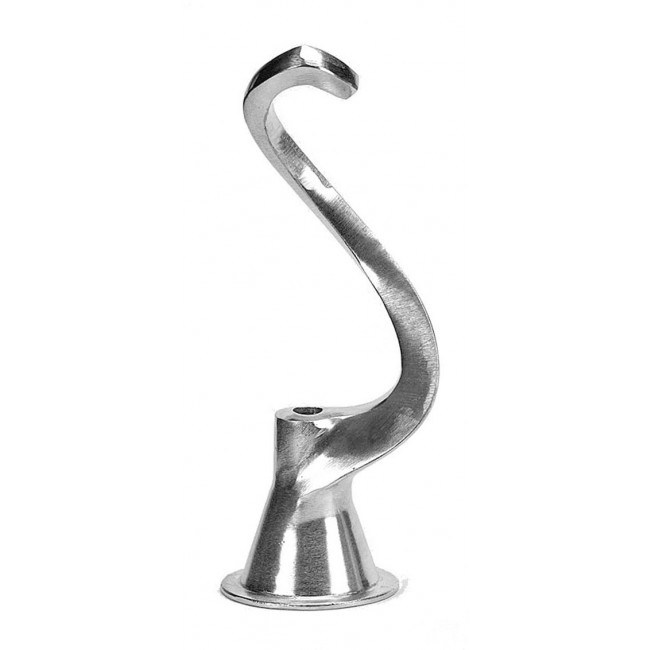
Dough hook
A dough hook, or dough arm, is used for mixing and kneading dough. By mimicking hand-kneading, the dough hook helps combine and work your heavy ingredients, and properly develops the gluten you want in your dough.
Dough hooks are used at low speeds, and are ideal for pizza dough, breads and rolls. The hook can also incorporate ingredients throughout the dough, such as raisins or nuts.
Shapes of dough hooks
- Spiral – Most dough hooks used with commercial mixers are spiral shaped, which forces the dough back down into the bowl as it mixes, and helps with the consistency of the mixing.
- J – A less common ‘J’ shaped hook can also be found, but the dough tends to climb up the hook as it is mixing, and the operator must continually push the dough back down into the bowl. Some people prefer this shape, however, because it is a bit gentler on the dough than the spiral shape, and therefore creates less heat while mixing.
- Hobart makes both shapes, the spiral and the J, however they call them 'ED' hooks and 'E' hooks, respectively. The E, or J-shaped hook, is recommended for pizza dough.
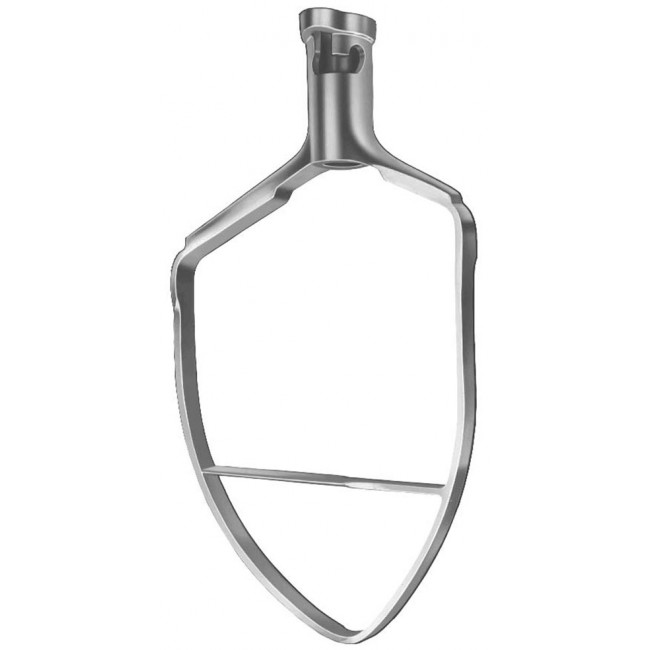
Pastry knife
A pastry knife attachment is ideal for making pastry or pie dough, as its knife-like edges cut in shortening and butter and mix your batter without overworking it. When using this attachment to stir, you would use a low speed, and for cutting actions, medium speeds are recommended.
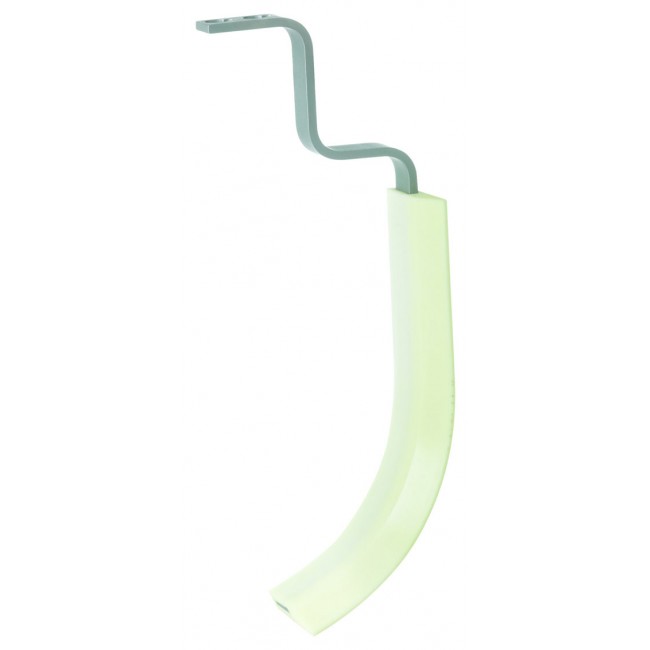
Bowl scraper
A bowl scraper is used in conjunction with a beater or whip agitator to continuously scrape the sides of the bowl while the machine mixes your ingredients. The bowl scraper saves on time and labor, since an operator doesn’t have to stop the machine to scrape down the bowl. It also improves food safety by minimizing the contact between the food and the operator.
A mounting bracket for the scraper is permanently mounted onto the mixer, and the bowl scraper is then attached to the mounting bracket when it is needed. It comes off easily to be washed or replaced as needed.
Before purchasing, make sure the bowl scraper can accommodate your ingredients. Some bowl scrapers are only meant for lighter mixtures and are not suitable for heavy doughs.
Safety guards and bowl covers
Safety guards are standard on some mixers, but can be added to mixers if they don’t have them. The front portion of the guard slides so ingredients can be added or taken out, and the mixer can’t be turned on unless it is locked back into the closed position. They are removable for easy cleaning.
Covers can also be used to prevent ingredients from splashing out of the mixer while in operation.
Maximize your mixer!
A commercial mixer can do so many things with this kind of variety of accessories available. Many mixers come with a few standard (i.e. flat beater, wire whip, and/or dough hook). Explore these others to create your best food yet. The right attachment can make the difference for the better.
To fully maximize your mixer and make more types of product with it, consider investing in other accessories. Consider having multiple hooks. Many professionals have extras on hand to reduce downtime during cleaning or in case of breakage.
If you have any questions about accessories or mixers, give us a call and we’ll be happy to help.
